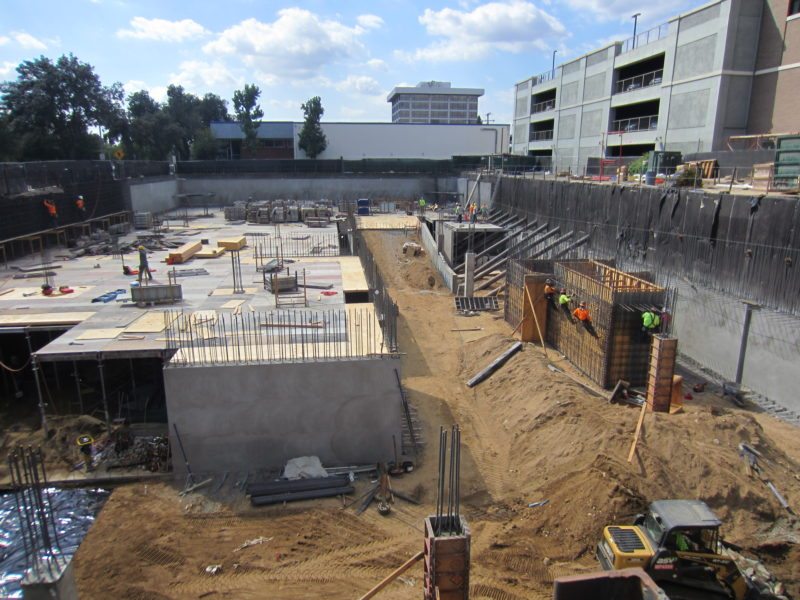
Hillside district anti-mansionization ordinance passes
By Gus Herrera
The Pasadena City Council’s most recent regular meeting saw an agenda filled with various development-related items.
For starters, the city’s latest large-scale development, the Hyatt Place Hotel project, received a final green light.
Although work is already underway where the Paseo Colorado Macy’s used to stand, the city still had to solidify the final tract map, which council swiftly approved without opposition.
In addition to the six-story, 179-room Hyatt Place Hotel, the project site will also include three new retail spaces for the Paseo Colorado shopping center and a six-story, mixed-use residential/commercial structure, according to city staff’s report. The mixed-use building will eventually house 71 new for-sale residential units.
The Hyatt hotel will be located at the northwest corner of Green Street and Los Robles Avenue and will also include 6,000 square feet of ground floor retail space that will front the Paseo’s central pedestrian mall.
The construction, which commenced earlier this year, is scheduled for completion in winter 2019.
As part of the final tract map, the developer also dedicated to the city the land necessary to construct a 15-foot-wide sidewalk along Los Robles Avenue capable of accommodating an Americans With Disabilities Act-compliant curb ramp.
The city council also approved $314,000 to rehabilitate the interior of Centennial Place, a 144-unit permanent supportive housing facility located at 235 E. Holly St.
The housing project, which is supported by Union Station Homeless Services, originally received a loan from the city in 2013 to fund various interior improvements.
According to staff’s report, only 42 percent of that scope of work has been completed to date, but the balance is expected to be finished by next month.
The new loan will help fund the following: full renovation of shower facilities; upgrades to the common bathrooms, kitchen, and community room; new unit doors; and installation of portable air conditioners and energy-efficient lighting.
Following the evening’s consent calendar, council heard two second readings of ordinances intended to curb the effects of development on city streets and residential “mansionization.”
The first ordinance will update the city’s traffic reduction and transportation improvement fee (TR/TIF) and modify the list of projects on which the funds can be spent.
The fee, which was created in order to mitigate the traffic impacts of new development on the city’s transportation infrastructure, traces its roots back to 1981, according to staff’s report.
The updated fee rates are as follows:
– $1.13 per square foot of net new industrial use.
– $10.79 per square foot of net new retail use.
– $8.13 per square foot for net new office use.
– $3,448 per net new unit multi-family residential.
– $8,905 per net new of single-family residential.
The TR/TIF is estimated to generate about $131.3 million for transportation capital improvement projects (CIP) through 2035. Funds will be allocated via the CIP budget process.
The second ordinance will amend the city’s single-family development standards within the hillside districts to address residents’ concerns regarding “mansionization.”
The anti-mansionization efforts include new regulations for accessory structures and view protection, as well as additional guidelines/thresholds for renovations and development permits.
The hillside ordinance is the third and final phase of a larger, city-wide effort to combat mansionization. The first two phases included anti-mansionization regulations for Lower Hastings Ranch and non-historic, non-hillside districts.




